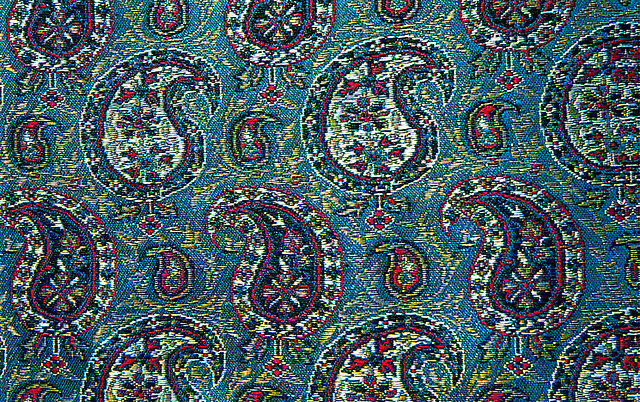Paisley or paisley pattern is an ornamental textile design using the boteh or buta, a teardrop-shaped motif with a curved upper end. Of Persian origin, paisley designs became popular in the West in the 18th and 19th centuries, following imports of post-Mughal Empire versions of the design from India, especially in the form of Kashmir shawls, and were then replicated locally.
Shawl made in Paisley, Scotland, in imitation of Kashmir shawls, c. 1830
Persian silk brocade with gold and silver thread (golabetoon), woven in 1963.
Shawl fragment, India, 20th century
Modern men's tie, before 1996
The Kashmir shawl, the predecessor of the contemporary cashmere shawl, is a type of shawl identified by its distinctive Kashmiri weave and for being made of fine shahtoosh or pashmina wool. Contemporary variants include the pashmina and shahtoosh shawls. In the late 20th century, they evolved to middle-class popularity through generic cashmere products, and raffal, shawls woven in the Kashmiri style, but using thicker Merino wool. Originally designed as a covering for men in India, it has evolved in the popular cultures of India, Europe, and the United States as indicators of nobility and rank, heirlooms giving on a girl's coming-of-age and marriage, and subsequently, as artistic elements in interior design.
Kashmir shawl
Pashmina goats in Ladakh
A 19th-century Kani shawl
The buta design on an 18th-century Kashmiri shawl








